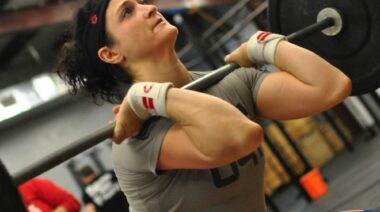Last week I wrote about the benefits of yogurt and explained how easy it is to make at home. This week we’ll look at a fermented food that’s even easier to make and also fits in the guidelines of pretty much any diet: sauerkraut.
Last week I wrote about the benefits of yogurt and explained how easy it is to make at home. This week we’ll look at a fermented food that’s even easier to make and also fits in the guidelines of pretty much any diet: sauerkraut.
My dad’s side of the family is Czech, so I always associated sauerkraut with old guys in suspenders dancing the polka. Like most traditional foods, there’s a reason people have been eating sauerkraut for centuries.
When prepared properly, it actually has some amazing health benefits. In a passage from Sally Fallon’s book, Nourishing Traditions, Annelies Shoneck describes how lacto-fermentation “ennobles” vegetables:
After two or three days of lacto-fermentation, vegetables begin to soften and certain substances in them begin to decompose. If the vegetables contain nitrates…they are broken down…If all goes well, the lactic acid producing bacteria take over and the process of acidification begins. New substances are formed, notably…choline and above all, lactic acid. This acidification ensures the conservation of the vegetables…but the fermentation of the aromas doesn’t come about until a later stage, during storage. Lacto-fermentation is not only a means of conserving foods, but also a procedure for ennobling them, as proved by their taste and aroma.
Lacto-fermentation, or “alchemy” as the ancient Greeks called it, is a fascinating process.
If you’ve ever done it you know it’s kind of like a fun science experiment. The basic idea behind lacto-fermentation is simple: we can preserve and enhance foods by providing a favorable environment for beneficial bacteria, or lactobacilli, to proliferate.
During this proliferation, which takes place in an anaerobic environment, lactic acid is produced as a by-product. As noted by Shoneck, lactic acid “…does not bring about in the body the over-acidifying action of certain other acids…
While other products of the fermentation process, like alcohol and acetic acid, must be decomposed and eliminated, lactic acid can in large part be used by the body.”
During the process of lacto-fermnation, the humble cabbage is enhanced with some qualities that are especially beneficial for people with an active lifestlye:
1. Sauerkraut increases iron absorption
According to Clinical Sports Nutrition, “Even a mild shortfall in tissue iron status appears not only to reduce maximum oxygen uptake and aerobic efficiency, but also reduce the body’s endurance capacity.
Any athlete involved in regular high intensity physical activity has a higher requirement and turnover of iron and can quickly deplete iron.” For this reason, sauerkraut is especially beneficial for women during menstruation and pregnancy, endurance athletes, and vegetarian and vegan athletes.
2. Sauerkraut has a high vitamin C content
This is the primary reason behind its activity as an iron enhancer. Fun fact: the innovative and legendary Captain Cook included 60 barrels of sauerkraut on his cargo list, which supposedly protected his entire crew from scurvy – an impressive feat back in the day of long sea voyages.
Although it’s unclear whether megadose of vitamin C have any benefit for athletes, suboptimal levels have been shown to decrease athletic performance.
3. Sauerkraut contains high choline concentrations
Choline is another byproduct of the lacto-fermentation process. Concentrations tend to be higher in the earlier stages of fermentation. Choline regulates blood composition and may even help prevent hypertension.
Acetylcholine, a neurotransmitter, is also formed from choline. A 1992 study in the International Journal of Sports Medicine showed that running a 26km marathon decreased choline levels in trained athletes by as much as 40%, which also affected actetylcholine production.
And of course, like all fermented foods, sauerkraut is good for your gut health.
If you follow intermittent fasting, Jason Maxwell recommends eating raw, fermented sauerkraut before a big meal. In many traditional cultures, no meal is complete without a bit of sauerkraut or other fermented vegetable to aid digestion.
Sauerkraut is also one of the easiest foods to make. You pretty much just put a bunch of cabbage in a jar, add some salt or whey, close it up really tight, and wait for the alchemy to happen. Here are more detailed instructions from Sally Fallon’s book Nourishing Traditions:
What You’ll Need:
- 1 medium organic cabbage (use a good one – the healthier the cabbage, the healthier the sauerkraut)
- 1 tablespoon caraway seeds
- 1 tablespoon sea salt
- 4 tablespoons whey (leftover from making yogurt or storebought) OR 1 tablespoon sea salt
- A quart-sized mason jar with a wide mouth and lids, sanitized
- Meat hammer or other object to pound the cabbage
What To Do:
1. Shred the cabbage, or use a food processor if you like a finer texture.
2. Mix the cabbage, caraway seeds, salt and whey (if you’re using it) in a bowl.
3. Beat the cabbage up with a meat pounder or other solid object until the juices release. You can also just knead it with your hands if you don’t mind getting your hands dirty.
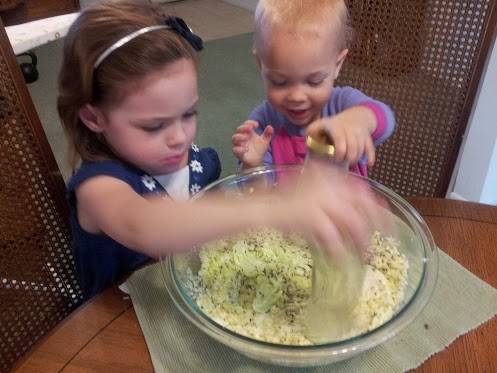
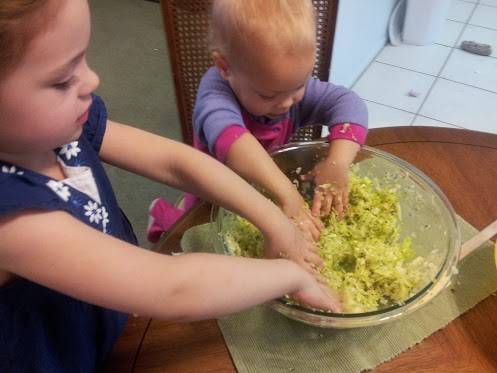
3. At this point you should have a good amount of juice in the bowl. Put the cabbage in the mason jar and push it down until the juices come up to the top. Leave at least an inch of room.
4. Cover the jar tightly, put it in your pantry, and forget about it for three days. DO NOT OPEN IT (and make sure your children don’t either, if you have any.) The ideal temperature is around 72 degrees. If your home is cooler, you might want to keep it out for 4 or 5 days. If it’s hotter in your house, 2 days will probably do it.
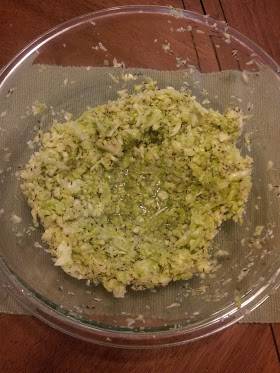
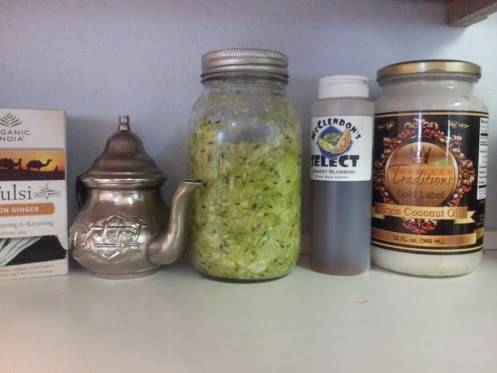
5. Put the jar in the warmest part of your fridge – around 40 degrees Fahrenheit is ideal for storage – or in a wine cellar, cave, or root cellar if you happen to have one (I’m jealous if you do).
You can eat the sauerkraut right away or give it more time. The flavor will increase the longer you wait. If you see any bubbles or foam rise to the top, just scrape it off. If the sauerkraut goes bad, your nose will tell you.
This is the most basic sauerkraut recipe I’ve made. We also enjoy cortido and kimchee, which have a few more ingredients. If you want to get started with lacto-fermented foods, here are some resources that have been helpful to me:
- Making Sauerkraut and Pickled Vegetables at Home, by Klaus Kaufmann and Annelies Schoneck; 2002.
- Nourishing Traditions, by Sally Fallon and Mary Enig; 1999.
- Wild Fermentation, by Sandor Ellix Katz: 2003.
References:
1. “Iron Depletion in Athletes,” Vicki Deakin. In Clinical Sports Nutrition, 4rd ed, 2006: 263-312
2. “The Role of Vitamin C in Athletic Performance.” Journal of the American College of Nutrition 8(6): 636-643
3. “Exercise and neuromodulators: Choline and acetylcholine in marathon runners.” International Journal of Sports Medicine 13:141-142




